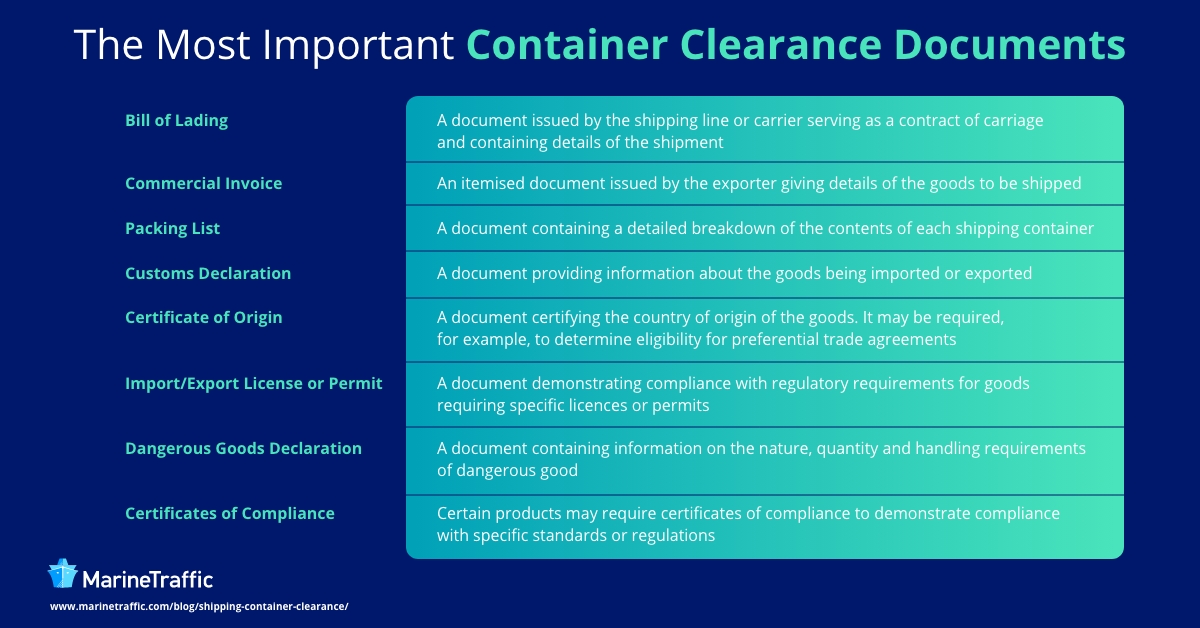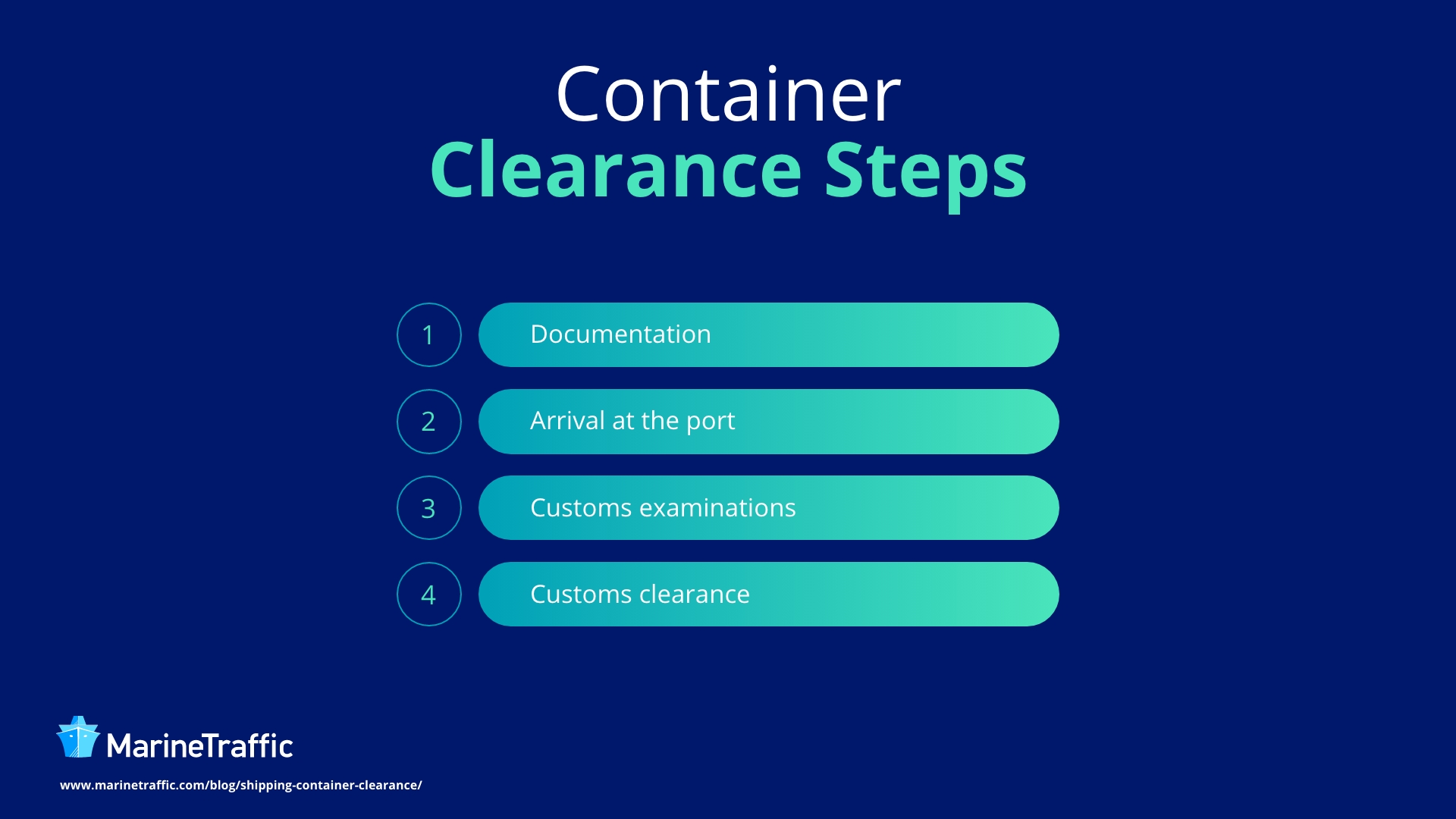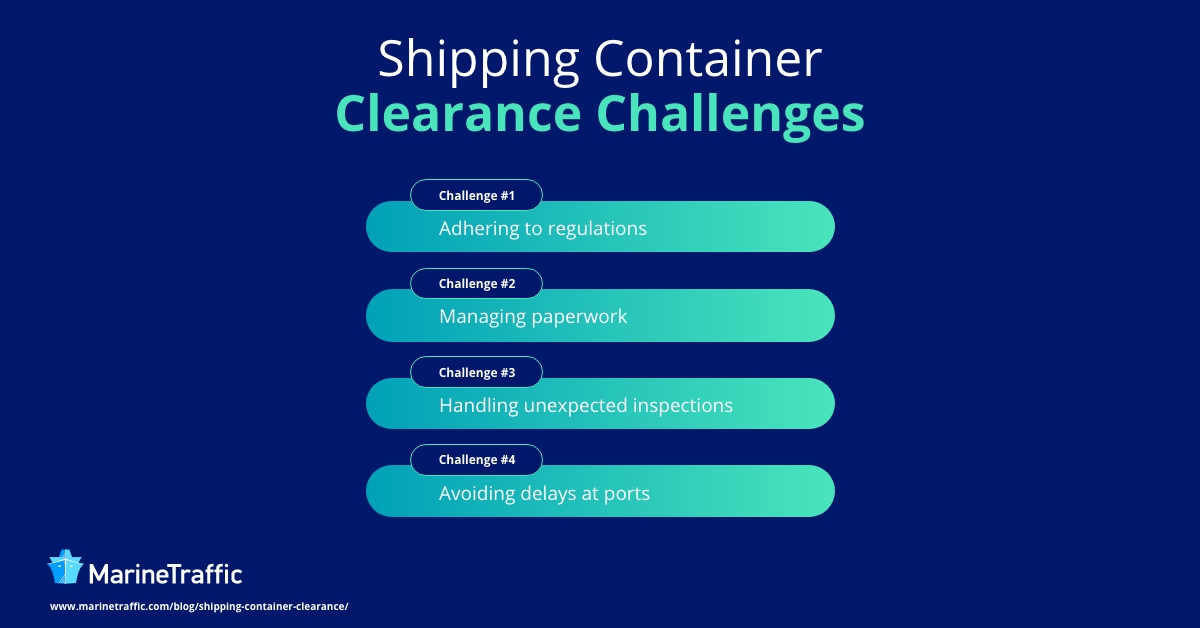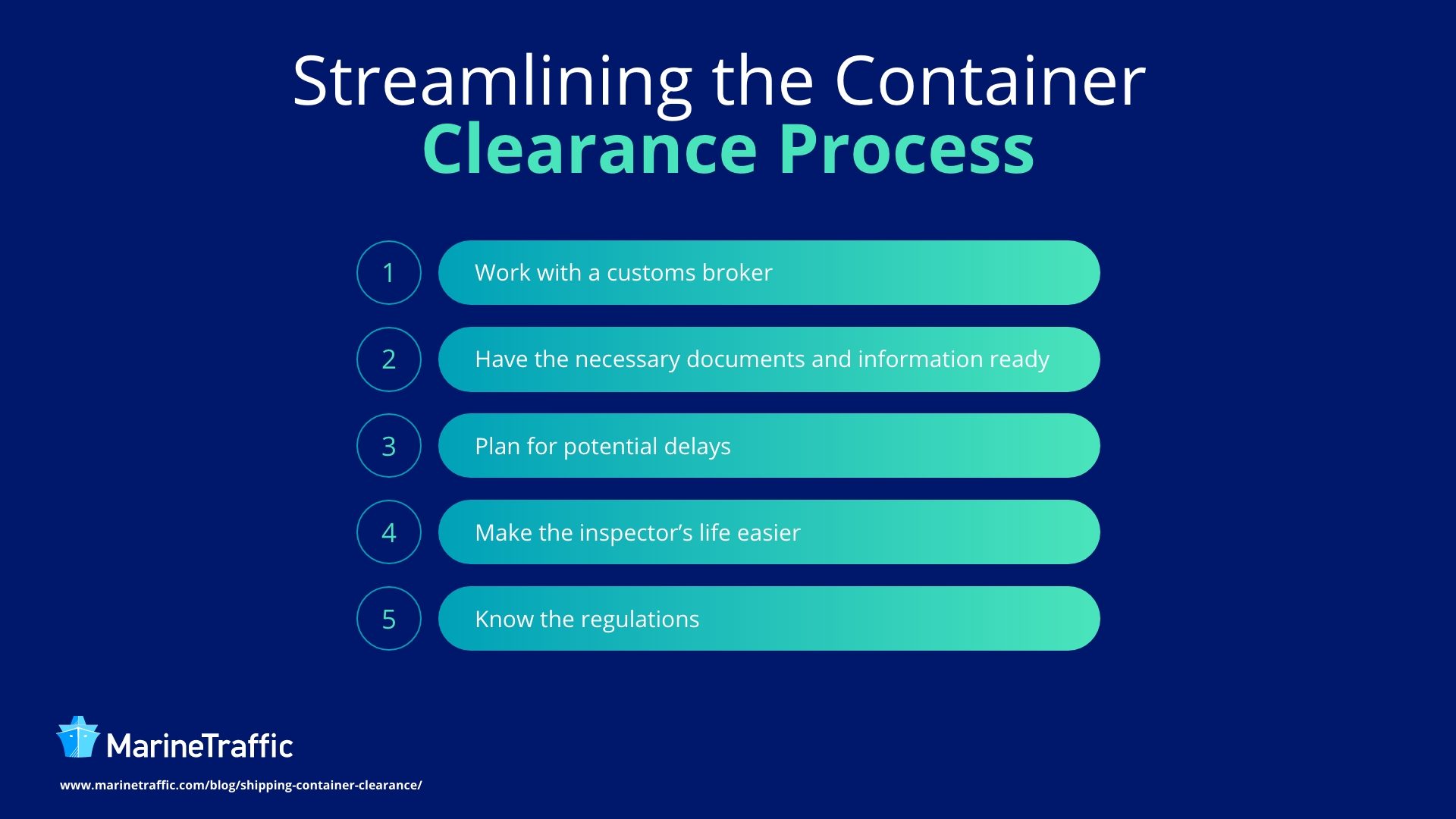Table of Contents
What is Shipping Container Clearance?
Why is Shipping Container Clearance Important?
What are the Most Important Container Clearance Documents?
What are the Different Steps in Container Clearance Procedure?
What are the Key Container Clearance Challenges?
Tips for streamlining the container clearance process
What Laws are Related to Container Clearance?
Are you transporting goods across the oceans, whether in high-cube containers, open-side units, open-top or reefers (refrigerated containers)?
Then it’s essential that you know the ins and outs of container clearance.
This guide will tell you everything you need to know to optimise your container handling operations.
From navigating complex documents to overcoming unexpected challenges, we’ve tried to cover it all.
We discuss the key documents required to clear your containers, address common challenges and provide practical tips on how to overcome them.
What is Shipping Container Clearance?
Shipping container clearance is the customs clearance process for cargo loaded inside full containers, which is carried out and authorised by customs officers at the port.
Containerised shipments require this for all containers carrying imported cargo, including empty containers, as part of the overall customs clearance process.
Customs clearance allows your container to move on to its destination; however, it cannot leave the port without it. Therefore, you should keep up-to-date with the documents required for this process.
Why is Shipping Container Clearance Important?
The clearance of shipping containers plays a central role in international trade and logistics, ensuring the smooth flow of goods from point A to point B, enabling smoother operations, and reducing the risk of damage.
One key reason why shipping container clearance is important is compliance. Each country has its own regulations and customs requirements that must be followed.
Non-compliance can result in fines, penalties or seizure of goods. By going through the proper clearance procedure, you show that you are complying with the law.
Another aspect is paperwork management. Clearing cargo containers requires a number of documents such as shipping bills, commercial invoices, packing lists and more.
For efficient customs clearance, these documents must be correct and complete. Inconsistencies or missing information can cause delays while the authorities check the details.
Dealing with unexpected inspections is also a challenge in container clearance. Customs officials are authorised to carry out random checks on storage containers at borders.
These checks may include unpacking containers and a thorough examination of the goods.
In addition, timely customs clearance helps to avoid bottlenecks at ports. Imagine even one trip where the sea containers are not cleared properly – chaos would ensue at the ports, leading to supply chain disruptions.
What are the Most Important Container Clearance Documents
There are several documents relevant to shipping container clearance.
The specific requirements may vary depending on the country, the mode of transport and the type of goods imported or exported. Below are some of the most important container clearance documents:
These documents serve as proof that your shipment meets all the requirements and regulations.
Without these documents, your containers could be held up at ports or even refused entry.
For instance, one of the most important documents for container clearance is the bill of lading.
This document serves as a contract between you and the shipping company, outlining details such as the contents of the container, its destination, and the person responsible for transporting it.
Another one is the commercial invoice, containing detailed information about the goods shipped, including their value and quantity.
It helps customs authorities determine whether duties or taxes need to be paid.
The packing list is also crucial in container clearance.
It lists all the items in the containers so that customs officials can check that no illegal or prohibited goods are being transported.
Other documents include certificates of origin (to prove where the goods were manufactured), insurance certificates (to protect against loss or damage during transport) and customs forms (precise details of your cargo).
Having these documents ready before container clearance begins can save you time and avoid unnecessary delays or complications at the ports.
What are the Different Steps in Container Clearance Procedure?
When it comes to container clearance, there are several important steps.
These must be followed carefully to ensure that the process runs smoothly without delays or complications.
1. Documentation
The first step involves gathering all the necessary information about the shipping container.
This includes the identification number, container size and weight and any paperwork such as a bill of lading, commercial invoice and packing list.
These documents provide important information about the contents of the container and its destination and help customs officials identify and track the container throughout the clearance process.
2. Arrival at the port
If all the documents are in order, the next step is to arrive at the port. The container is transported from its place of origin to the port of destination, where it undergoes further inspection.
On arrival, the container is subjected to a security check and a customs check; it’s checked against the documents presented to ensure that it matches the information provided by the shipper.
3. Customs examinations
During customs examinations, customs officials carefully check the contents of the used shipping containers to ensure that it complies with regulations and to identify possible risks and prohibited or undeclared goods.
They also check the condition of the container, the seals and any signs of tampering to ensure the integrity of the cargo.
4. Customs clearance
If the container passes the customs examinations and all other import conditions, it receives customs clearance.
This means that the container itself is deemed compliant with customs regulations and is approved for ongoing transport to its final destination.
Before the goods are released, all necessary forms must be submitted and all applicable fees paid.*
Each step of the container handling process requires careful attention to detail and regulations to ensure that the shipping container delivery can take place as planned.
What are the Key Container Clearance Challenges?
Container clearance can be a complex process that presents several challenges.
1. Adhering to regulations
One of the biggest challenges is adhering to regulations.
There are a number of regulations, import/export laws and documentation requirements set by various countries and customs authorities that must be followed for smooth clearance of shipping containers.
Failure to comply with these regulations can result in delays, fines or even seizure of the container.
2. Managing paperwork
Another challenge is the management of paperwork. The documentation required for container clearance can be extensive and time-consuming.
From the bill of lading to the commercial invoice, from the packing list to the certificate of origin, numerous documents need to be prepared accurately and submitted on time.
3. Handling unexpected inspections
Another hurdle in clearing containers is dealing with unexpected inspections. Customs authorities may carry out random checks or take a closer look at certain consignments.
Containers may also be subjected to security checks and X-rays.
These checks can cause delays and further complicate an already complicated process.
4. Avoiding delays at ports
Avoiding delays at ports is also a major challenge in container clearance. Ports are busy hubs where large volumes of cargo enter and leave every day.
Delays can occur due to congestion, lack of space, problems with documents or payment or other unforeseen circumstances.
*
By being aware of these key challenges and taking proactive measures to address them effectively, companies can streamline their container clearance process and ensure timely delivery.
Tips for streamlining the container clearance process
Fortunately, you can easily reduce the risk of damage or loss, minimise hassle, and ensure a reliable service from start to finish by following a few tips. 
A solution like MarineTraffic can help streamline the container clearance process.
Thanks to real-time tracking, container-specific searches, improved calculations of ETA and consolidated information, it provides valuable insight and information to the stakeholders involved in container clearance.
This way, you can track containers, estimate arrival times and efficiently plan and execute customs procedures.
1. Work with a customs broker
The customs broker can handle the customs clearance process for you and ensure that your shipment complies with all standards and regulations for the import or export of goods.
Therefore, working with one can greatly simplify and speed up the container clearance process.
These professionals are experienced in dealing with complex customs procedures and can ensure that all the necessary paperwork is properly completed and submitted on time.
2. Have the necessary documents and information ready
Having the necessary documents for your shipment ready in advance can make all the difference.
These include, for example, the bill of lading, the commercial invoice and the packing list, as well as any other relevant certificates or permits required by customs authorities.
If you have these documents to hand, you can avoid unnecessary delays or complications during clearance.
3. Plan for potential delays
Planning for possible delays is also important. Delays can occur for a variety of reasons, such as bad weather or unexpected inspections.
If you plan for possible delays when scheduling shipments, you can better manage your expectations and avoid unnecessary stress.
To ease your mind, MarineTraffic offers real-time vessel tracking and visibility solutions that help you monitor the progress of your containers and have insight into their current location and estimated time of arrival (ETA).
4. Make the inspector’s life easier
When the time comes for customs examinations or inspections, making an inspector’s job easier can go a long way to speeding up the clearance process.
This includes making sure your cargo is properly marked and packed according to regulations.
By being well-organised, you show professionalism and a willingness to cooperate, which can lead to faster clearance.
MarineTraffic’s solution enables dynamic, predictive ETA calculations taking into account transshipments and port congestion, and can help customs authorities and other stakeholders streamline the process.
5. Know the regulations
Finally, it’s important to be fully aware of the import regulations of the country your shipment is going to and the relevant container handling regulations.
Keeping up to date with changes to import/export regulations can help you avoid compliance issues that could lead to significant delays or penalties.
What Laws are Related to Container Clearance?
Knowledge of the laws relating to container clearance is important for importers and exporters alike. Some of the most important laws are:
- Customs laws and regulations: These laws regulate the import and export of goods and set out the requirements and procedures for customs clearance. They contain provisions on import duties, customs value, classification of goods, prohibited and restricted goods, etc.
- International trade agreements: Free trade agreements (FTAs) or preferential trade agreements (PTAs), establish trade rules and tariff preferences between participating countries. Compliance is a prerequisite for claiming reduced or eliminated import duties.
- International Maritime Organization (IMO) regulations: IMO governs maritime safety, security and environmental protection. These regulations cover the weight and stowage requirements of containers, the handling and labelling of dangerous goods, ship safety standards and emission control, amongst others.
There are also the International Organization for Standardization (ISO) guidelines for container dimensions and specifications and security measures under initiatives such as Customs-Trade Partnership Against Terrorism (C-TPAT).
Note that this list is not exhaustive and that the laws applicable to the clearance of shipping containers may vary depending on country-specific regulations and the specific type of goods being imported or exported.
To Sum Things Up
Shipping containers play a crucial role in international trade but clearing containers can, at times, be quite complex and difficult.
From regulatory compliance to managing paperwork to avoiding delays at ports, there are numerous hurdles companies must overcome when clearing their shipments.
To streamline container clearance and ensure a smooth flow of goods, it’s important to understand the intricacies of the process and work with professional players who can assist you with compliance.
MarineTraffic is one of them and can help you search for, track and access relevant information in a consolidated overview – all in one place.
Book a free demo now and one of our experts will be more than happy to show you how you can benefit from our solutions.
Tips for streamlining the container clearance process
Fortunately, you can easily reduce the risk of damage or loss, minimise hassle, and ensure a reliable service from start to finish by following a few tips.

